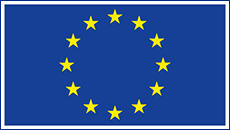
As of 1 July, 2018, 188,051 people with disabilities are registered in the Republic of Armenia (hereinafter referred to as the RA). About 94,000 people with disabilities (hereinafter PWD) need socio-environmental adjustment, which is mainly related to providing an accessible environment. Today, 19,113 persons with disabilities of different groups are registered in Lori marz, of which about 3,000 are wheelchair users, 1,100 are walker users, about 1,500 are crutch users; 2090 people with mobility problems reside in Vanadzor. One of the most pressing social issues for the city of Vanadzor in the Lori region is the ssue of full inclusion in public life of PWDs. Armenia, as a post-Soviet state, has received a heavy legacy in this respect. The problems of persons with disabilities were not dealt with in the Soviet times, and for this reason the streets, passageways, residential and social buildings of public importance were simply ignored, there were no sidewalks, no accessibility or accessibility issues. As an example, it is noteworthy to mention the administrative building of Vanadzor municipality, which is in no way adapted to PWDs, and which is architectural value according to the public authorities and cannot be adapted. Members of the “Equal Rights, Equal Opportunities” NGO have repeatedly raised the above issues, but the problem has not been resolved.
The present study was conducted by the “Equal Rights, Equal Opportunities” NGO for disabled persons, member of the Human Rights Protection Coalition, in the scope of the “Human Rights: Monitoring and Publicity” project implemented with a sub-grant allocated by the EU-funded “Commitment to Constructive Dialogue” project implemented by the consortium led by Armenian Association of Lawyers NGO.
The aim of the project is to promote human rights protection in Armenia by promoting better public policy in the field. Specific purpose is to promote the protection of the rights and interests of persons with disabilities (hereinafter PWD).
15 public institutions of public importance were selected for this study. These structures were selected based on the number of residents they serve. The structures that serve the residents of the adjacent settlements besides Vanadzor have also been selected. As a result, the 15 selected structures serve the needs of almost all settlements in case of need. Another important reason for the choice of structures was that there was a “singularity”, “no alternative”, that is to say, if a person cannot access the building, that is to enter it and access services because of physical inaccessibility, there is no other such structure to resolve the issue. These facilities were monitored from the inside and outside for accessibility, individual interviews were conducted with the heads of those facilities, and 200 individual surveys were conducted with people with disabilities.
The report consists of 3 chapters:
- Legal Regulations
- Construction norms and disclosures
- Conclusion and Recommendations:.
Relations related to the social protection of persons with disabilities in the Republic of Armenia are regulated by the “RA Law on Social Protection of the Disabled in the Republic of Armenia.” Although amendments and additions have been made to the law on a regular basis, the established principles and approaches have become untimely and do not meet internationally accepted and recognized criteria for the social inclusion of persons with disabilities.
Under the current legislation, a person with a disability is a person who is in need of social protection due to limitations in his/her health due to impaired health. This approach is based mainly on the medical model of disability, which does not take into account the characteristics of a person’s activity and participation, as well as external factors that may have a positive or negative impact on them.
Although in recent years the public sector has implemented a number of measures aimed at creating a safe environment for people with disabilities, the situation remains unsatisfactory. The problem will remain unsatisfactory, as there are no major practical steps taken by the public sector to change the situation.
A large-scale action plan needs to be developed to radically and gradually improve the situation. It will include, for example, basic access to around by 2025 urban and engineering infrastructures, transport, health, educational, cultural, sports, social infrastructure institutions and the creation of a favorable environment for the active living of persons with disabilities.
The report is available in Armenian language.


